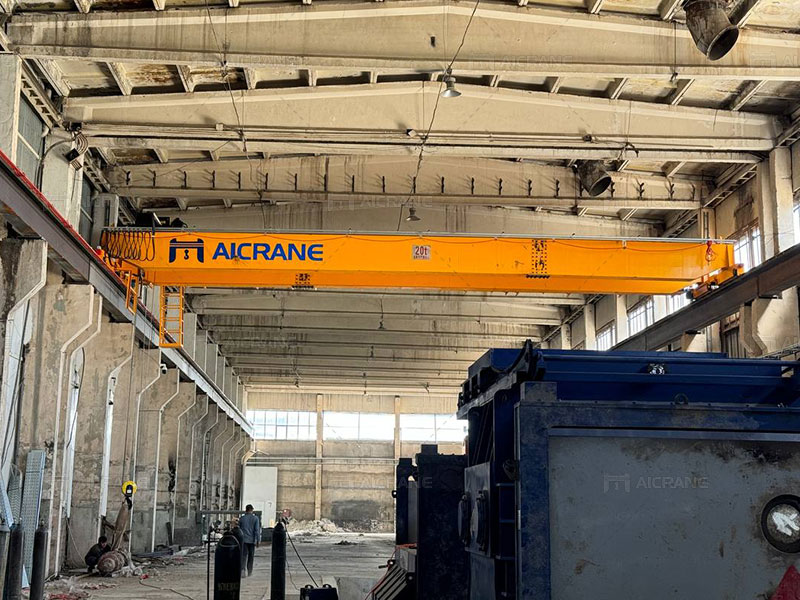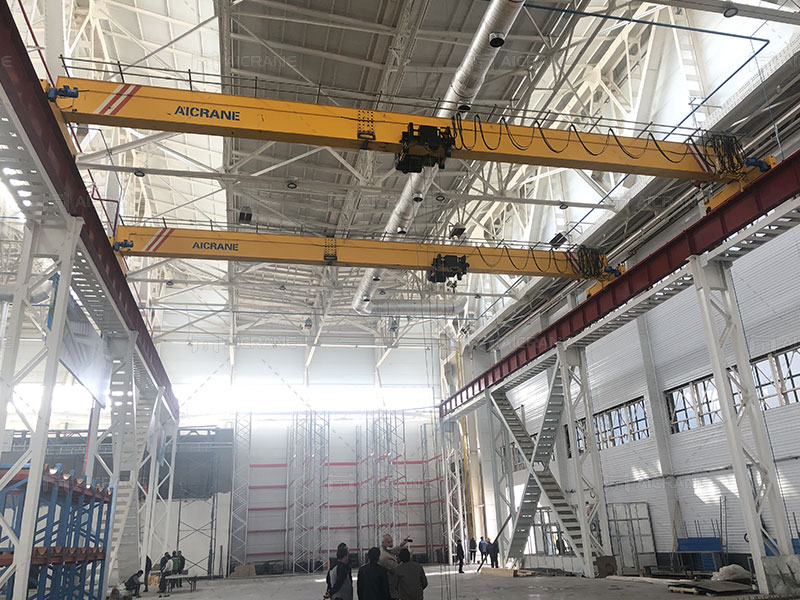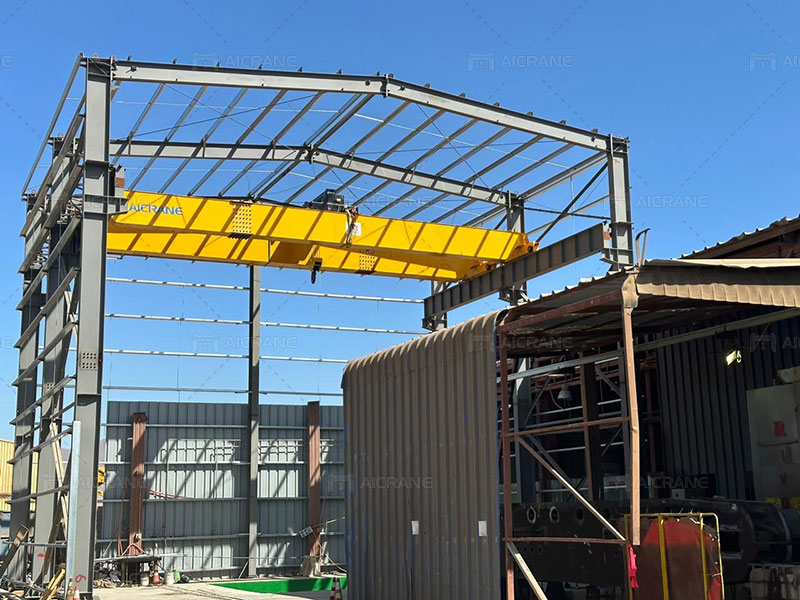Electric Overhead Traveling (EOT) cranes are indispensable pieces of equipment in industries like manufacturing, construction, steel production, and warehousing. These cranes are designed to lift heavy loads and move them along an overhead beam, significantly improving operational efficiency. However, EOT cranes come in a variety of sizes, capacities, and configurations, making their prices quite diverse. Understanding how EOT crane prices vary based on factors such as capacity and features is essential for businesses looking to make informed purchasing decisions.
In this article, we will explore the key elements that influence the EOT crane price, with a particular focus on how their lifting capacity and features play a crucial role in determining their cost.

1. Impact of Lifting Capacity on EOT Crane Price
The lifting capacity is one of the most significant factors that influence the price of an EOT crane. Essentially, this refers to the maximum weight the crane is capable of lifting. The capacity of an EOT crane is typically expressed in tons, and common capacities range from 1 ton for light-duty cranes to 100 tons or more for heavy-duty models. The greater the capacity of the crane, the higher the cost, as larger cranes require more robust components, more power, and advanced engineering.
a) Low-Capacity Cranes (1 to 10 Tons)
For businesses that require a small lifting capacity, EOT cranes with a 1-ton to 10-ton capacity are usually sufficient. These cranes are ideal for smaller operations such as light-duty assembly lines or warehouses with moderate load handling requirements. EOT cranes in this range are generally less expensive because they are built with less heavy-duty material and have smaller motors and drives. The 1-ton to 10 ton overhead crane price can start from around $10,000 to $30,000, depending on the specific features and brand.

b) Medium-Capacity Cranes (10 to 50 Tons)
EOT cranes in the medium capacity range, between 10 and 50 tons, are typically used in industries such as manufacturing, automotive, and heavy lifting in warehouses or construction sites. These cranes offer a balance between affordability and functionality. The 10 to 50 ton overhead crane price range varies between $30,000 to $80,000 or more, depending on the specific features and customization options. The increased price over low-capacity models reflects the need for more powerful motors, more intricate safety systems, and structural components capable of handling larger loads.

c) High-Capacity Cranes (50 Tons and Above)
High-capacity EOT cranes, with lifting capacities above 50 tons, are designed for large-scale operations in industries such as steel production, heavy construction, and port logistics. These cranes are engineered with stronger structural elements and specialized features to lift extremely heavy loads safely. Prices for high-capacity EOT cranes can start from $100,000 and can exceed $500,000, especially for cranes designed to lift over 100 tons. The high cost is due to the need for advanced engineering, durable materials, and specialized technology to ensure safe operation at maximum loads.
2. Role of Features in EOT Crane Pricing
Aside from lifting capacity, various features and technologies incorporated into the design of an EOT crane can significantly affect its price. These features enhance the crane’s performance, safety, and efficiency, but they also add to the initial investment. Below are some of the key features that influence EOT crane pricing:
a) Control System and Operation Mode
EOT cranes come with different control systems, and the type of control system selected can impact the cost. The most basic cranes have pendant controls, which require an operator to manually guide the crane using a joystick or button on a cable-connected remote. These systems are generally more affordable, with prices ranging from $10,000 to $50,000 for smaller models.
However, more advanced systems such as radio remote controls, wireless controls, and automated crane systems (using PLCs or other digital systems) are more expensive. These advanced systems allow for greater precision, improved safety, and enhanced productivity. Automated cranes, in particular, are highly desirable in high-volume industries as they reduce human labor and minimize errors. Automated EOT cranes can add tens of thousands of dollars to the overall cost.
b) Safety Features
Safety is paramount when operating cranes, particularly when handling heavy loads. EOT cranes can be equipped with various safety features, including:
- Anti-collision systems: These prevent the crane from colliding with other machinery or workers.
- Load sensors: These sensors monitor the load and ensure that it does not exceed the crane’s rated capacity.
- Overload protection: This prevents the crane from lifting beyond its safe operating limit.
- Emergency stop mechanisms: These systems can quickly halt the crane’s movement in case of an emergency.
- Advanced braking systems: These ensure that the crane can safely stop under heavy load conditions.
Each of these safety features adds to the overhead bridge crane price. A basic EOT crane without advanced safety features may cost less, while a crane equipped with top-of-the-line safety mechanisms can significantly increase the price, often by 20-30%.
c) Environmental Conditions and Design Features
EOT cranes designed to operate in extreme environmental conditions, such as in high-temperature environments or in corrosive areas, are built with special materials and coatings to protect them from wear and tear. These cranes are often referred to as “harsh environment” cranes. They may include corrosion-resistant components, dust-tight enclosures, and explosion-proof designs. Such features increase the overall cost, sometimes by as much as 40-50%, depending on the severity of the operating environment.
Additionally, cranes that are designed to be more compact or have customized spans to fit particular warehouse layouts may also incur higher costs due to the need for specialized engineering and fabrication.
d) Speed and Performance Upgrades
The speed at which an EOT crane can operate, including the hoist speed and travel speed, is another factor that influences its price. Cranes with higher speeds require more powerful motors and sophisticated control systems. For instance, cranes designed for high-speed operations in warehouses or distribution centers will have a higher price tag than standard models.
Performance upgrades, such as the inclusion of more powerful hoisting mechanisms or more precise motion control systems, can also impact pricing.
e) Maintenance and Service Packages
Many manufacturers offer extended warranties and maintenance service packages, which can influence the total cost of the crane. These packages may include regular maintenance, emergency service calls, and replacement parts. While these add-ons increase the upfront price of the crane, they can offer long-term savings by reducing downtime and maintenance costs over the crane’s lifespan.
3. How Customization Affects EOT Crane Price
Customization is another factor that can significantly affect the price of EOT cranes. Businesses with specific lifting needs often request tailored solutions that meet their exact requirements. Customizations can include:
- Modifications to lifting height, span, or trolley design
- Special coating for corrosion resistance
- Upgraded controls or safety systems
- Special hoisting and lifting attachments
Custom-built EOT cranes typically cost more than off-the-shelf models due to the additional engineering, design, and manufacturing time involved. The price for a customized crane can easily surpass that of a standard model by 20-50% or more.
4. Conclusion
EOT crane prices vary significantly based on their lifting capacity and the features they offer. While a smaller, basic crane may cost as little as $10,000, a high-capacity, feature-rich EOT crane can cost several hundred thousand dollars. The key factors affecting pricing include lifting capacity, control systems, safety features, design requirements, and any customizations required. By understanding these factors, businesses can make more informed decisions when purchasing an EOT crane, ensuring that they choose the right model for their specific lifting needs without overpaying for unnecessary features. Ultimately, balancing cost with functionality and safety is essential to maximize the value of an EOT crane investment.